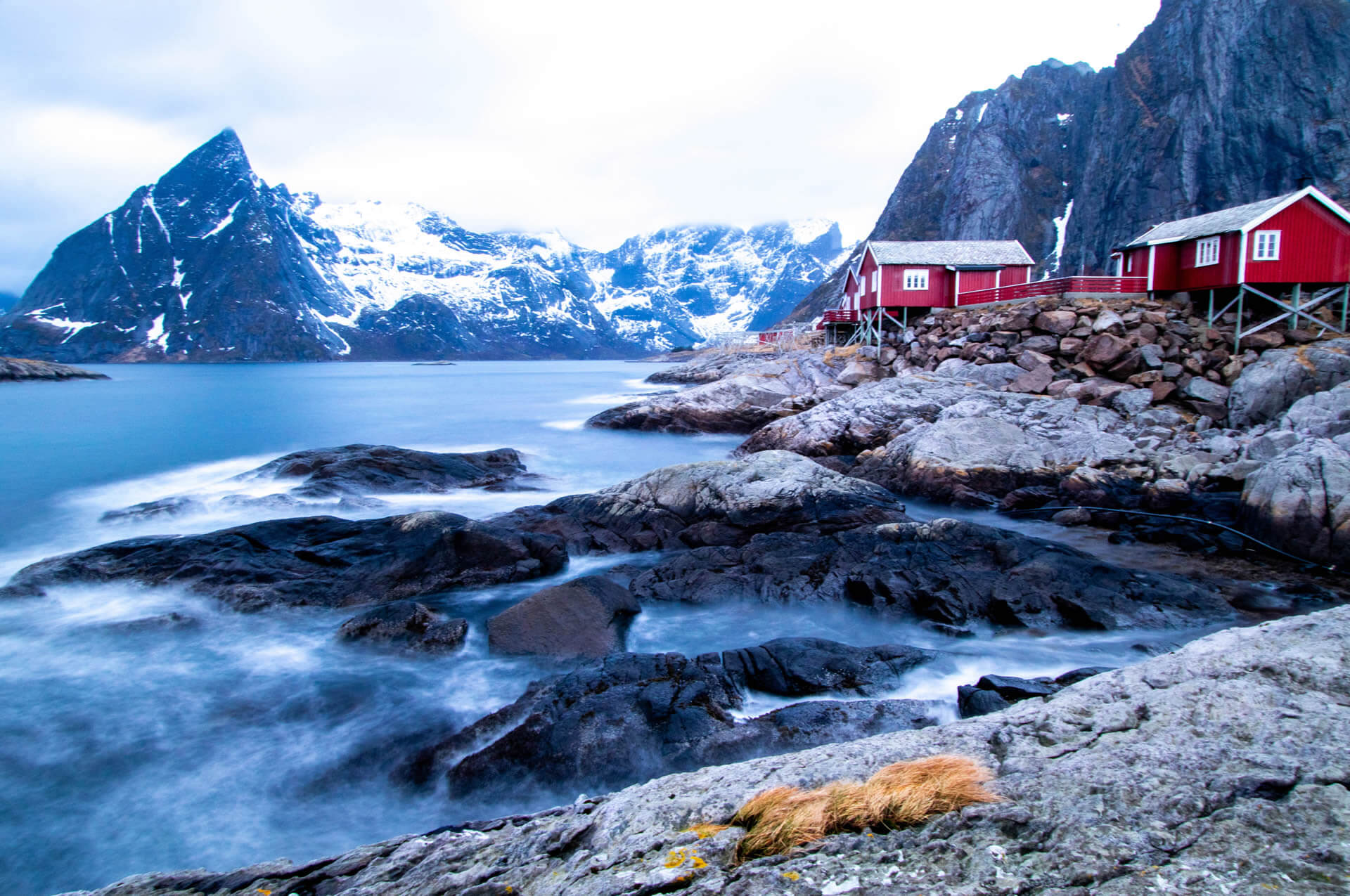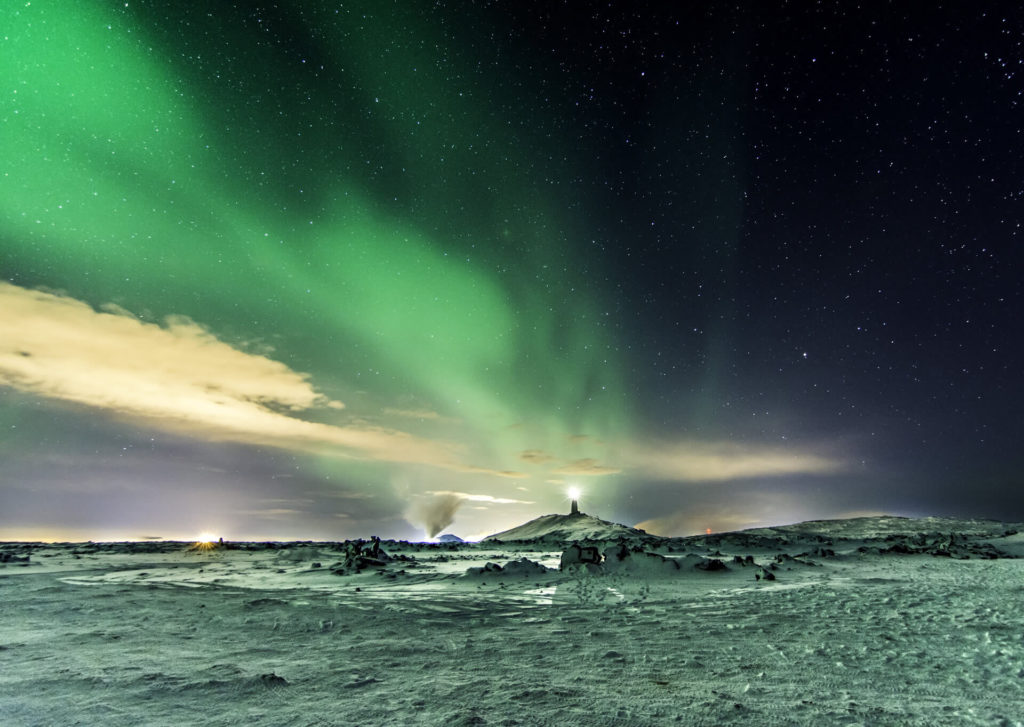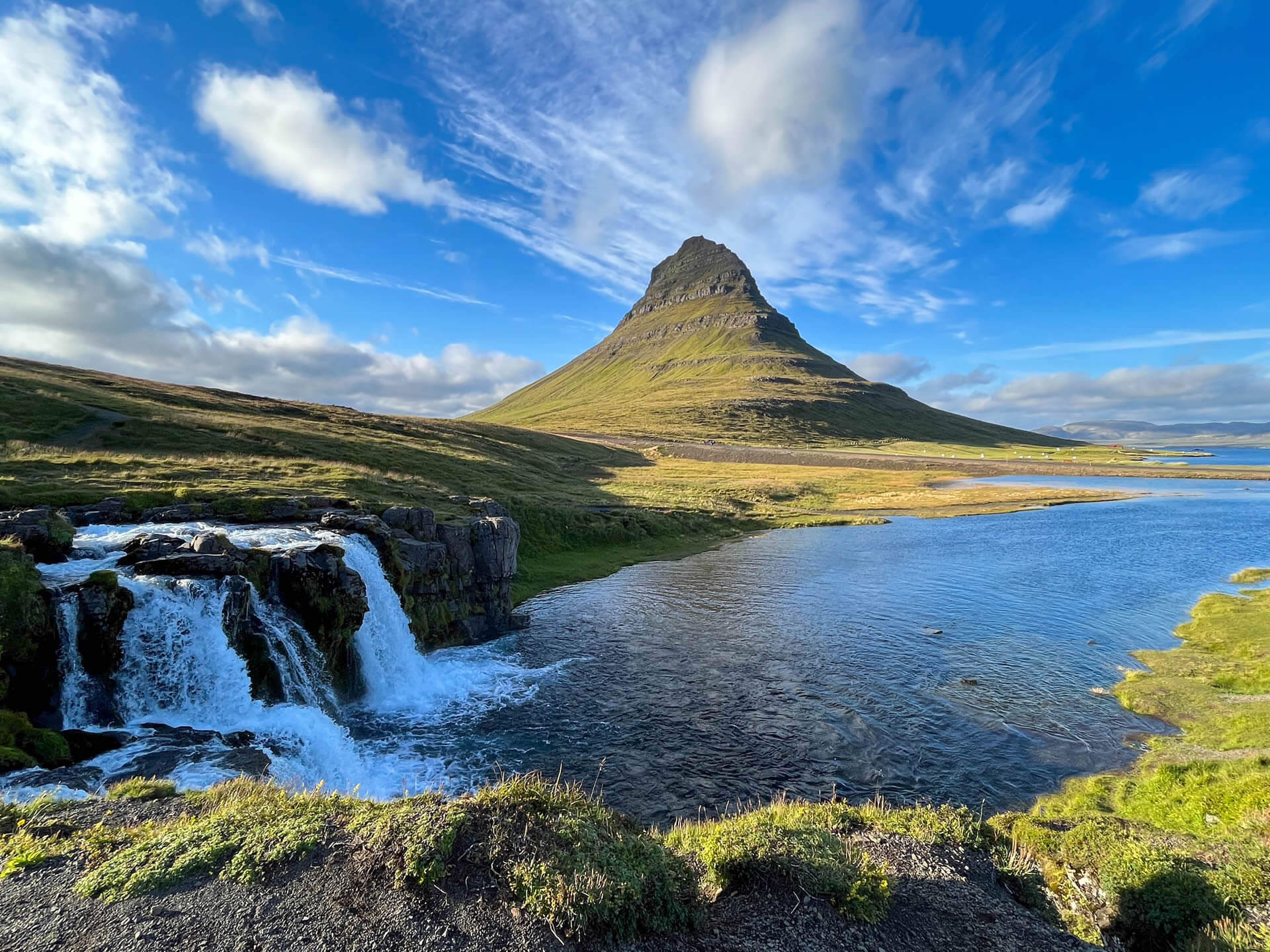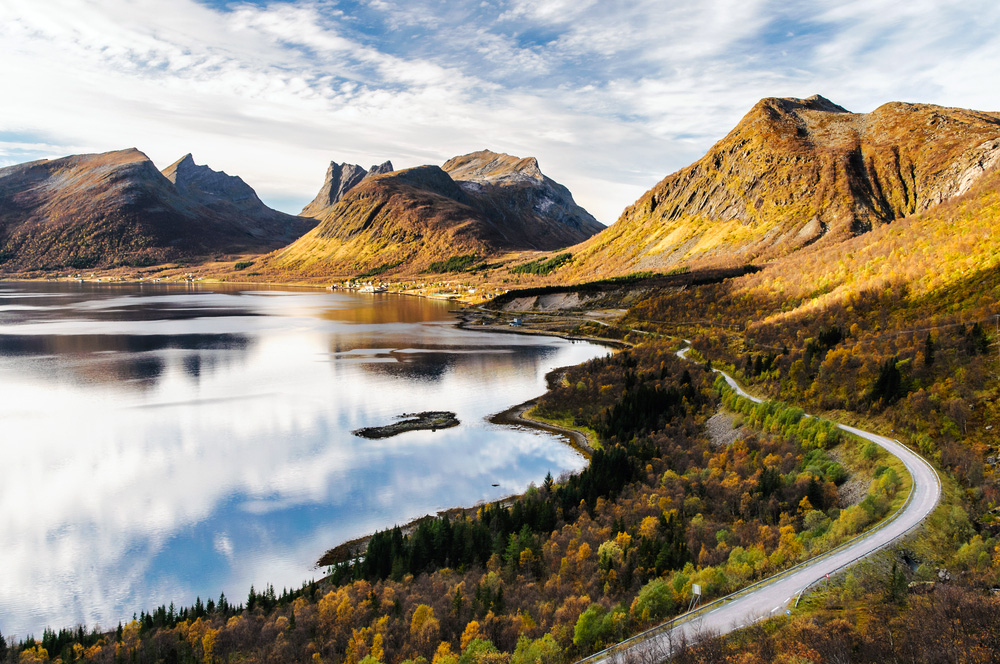
Discovering the Enchanting Faroe Islands: A Nordic Archipelago of Breathtaking Landscapes and Cultural Charms
Introduction
N
estled in the vast expanse of the North Atlantic Ocean lies a hidden treasure awaiting intrepid travelers—the Faroe Islands. This remote archipelago, consisting of 18 captivating islands, offers a mesmerizing blend of untouched nature, dramatic landscapes, rich cultural heritage, and warm hospitality. From towering cliffs to cascading waterfalls, picturesque villages to vibrant bird colonies, the Faroe Islands provide an escape into a world of unparalleled beauty and tranquility. Join us as we embark on a detailed exploration of this Nordic haven.
Untamed Beauty: A Natural Wonderland
The Faroe Islands boast a natural beauty that is both rugged and ethereal. Majestic mountains rise from the depths of the sea, their peaks often shrouded in mist. Iconic sea cliffs, such as the Vestmanna Bird Cliffs, stand as towering guardians, providing nesting grounds for numerous seabirds. The archipelago’s fjords and valleys are blanketed in lush greenery, contrasting with the dark volcanic rocks that form the foundation of these islands. The landscape, constantly shaped by wind and water, evokes a sense of awe and wonder.


Outdoor Adventures: Exploring Nature’s Playground
For outdoor enthusiasts, the Faroe Islands offer a playground of endless possibilities. Hiking is a popular activity, with well-marked trails meandering through breathtaking sceneries. From leisurely strolls along coastal paths to challenging treks in the mountains, there is a route suited to every level of experience. Be prepared to encounter impressive vistas, hidden waterfalls, and the company of sheep that freely roam the islands. Explore the famous hiking routes like Sørvágur to Gásadalur, Klaksvík to Viðareiði, and Funningur to Gjógv for marvelous landscapes and unforgettable experiences.
Birdwatching is another popular activity in the Faroe Islands. Seabird colonies can be found on the dramatic sea cliffs, providing incredible opportunities to observe species such as puffins, guillemots, kittiwakes, and fulmars. Vestmanna Bird Cliffs and Mykines Island are particularly renowned for their abundant bird populations.
The Faroe Islands’ jagged coastline and crystal-clear waters beckon adventurers to explore the marine wonders. Exploring the coastline by kayak or boat is a fantastic way to discover hidden gems and experience the archipelago’s wild beauty from a unique perspective. Paddle through serene fjords, glide past towering sea cliffs, and explore hidden caves. Boat tours often take you to remote locations and provide opportunities for wildlife sightings, including seals and dolphins.
Alternatively, take a boat tour to witness the awe-inspiring sight of sea stacks, hidden caves, and the untamed power of the Atlantic Ocean.
The surrounding waters of the Faroe Islands offer excellent fishing opportunities. Join a fishing excursion or try sea angling from the shore, and you might catch species like cod, haddock, mackerel, or even a salmon. Fishing is not only a recreational activity but also an important part of Faroese culture, allowing you to connect with the island’s traditions.
The ocean is teeming with marine life, including several species of whales. Join a whale-watching tour to spot majestic creatures like pilot whales, orcas, and porpoises. These tours provide a chance to observe these magnificent animals in their natural habitat, creating unforgettable memories.
The landscapes here are a photographer’s dream. Everywhere you turn, you’ll find beautiful scenes that beg to be captured. Scenic drives along winding roads offer ample photo opportunities, with stunning vistas at every bend. Some notable locations include the Saksun village, Gjógv, and the winding roads of the mountainous interior.
For adrenaline seekers, the Faroe Islands offer thrilling rock climbing experiences. The sturdy cliffs provide challenging routes for climbers of various skill levels. Experienced climbers can explore locations like Trælanípan, Cape Enniberg, and Villingadalsfjall, where they can test their skills against the island’s vertical walls.
For a truly immersive experience in nature, consider camping in designated areas across the islands. Wake up to dream-like landscapes, the sound of crashing waves, and the fresh scent of the Faroese air. Several accommodations, including traditional guesthouses and farm stays, offer a chance to spend the night and experience the warmth of Faroese hospitality.
Remember to always respect the environment, adhere to safety guidelines, and obtain any necessary permits or permissions before engaging in outdoor activities in the Faroe Islands. With its stunning natural wonders and endless opportunities for adventure, this Nordic archipelago is sure to satisfy outdoor enthusiasts seeking an unforgettable experience.

Cultural Heritage: A Glimpse into the Past
Despite their remote location, the Faroe Islands have a rich cultural heritage deeply rooted in their Norse ancestry. Visit the small villages scattered across the islands to immerse yourself in the traditional Faroese way of life. The architecture of turf-roofed houses, stone fences, and wooden churches reflects centuries-old traditions. The locals proudly maintain their cultural identity through events like the Faroese chain dance, where participants join hands and dance in a circle to traditional tunes.
The Faroese language, a descendant of Old Norse, is still widely spoken and reflects the islands’ historical ties. Engaging with the locals offers an opportunity to learn about their customs, legends, and the challenges of living in this remote archipelago.
Gastronomic Delights: Savory Flavors from the Sea and Land
The Faroese cuisine is a delightful fusion of flavors, showcasing the abundant resources found in the surrounding ocean and on the islands themselves. It is deeply rooted in traditional practices, with a focus on preserving and utilizing local ingredients.
Seafood Specialties:
Being an archipelago, it’s no surprise that seafood plays a central role in Faroese cuisine. Freshly caught fish, such as Atlantic cod, haddock, and halibut, form the backbone of many dishes. Try “ræstur fiskur,” which involves fermenting and drying the fish in the open air, resulting in a unique and intense flavor. Another popular dish is “ræst kjøt og fiskur,” a combination of fermented lamb and fish, often served with potatoes and root vegetables.
Lamb is a staple in the Faroese diet, and the islands’ free-roaming sheep graze on wild herbs and grasses, lending their meat a distinctive flavor. “Skæri kjøt” refers to the air-dried and cured lamb, which is then often grilled or roasted to perfection. “Kósin sjónvarp,” a traditional dish, involves boiling lamb’s head and serving it with mashed potatoes, root vegetables, and a rich gravy.
While less prevalent than seafood and lamb, Faroese cuisine does include poultry and game dishes. “Grind og spik” is a traditional dish featuring pilot whale meat, which is boiled and served with potatoes and onions. It is important to note that whale hunting, while a cultural practice, is regulated and sustainable in the Faroe Islands.
Dairy products hold a special place in the Faroese diet. Skyr, a creamy and thick yogurt-like product, is commonly consumed for breakfast or as a snack. Local cheeses, such as “rúgbrauðostur” and “Havarti,” showcase the region’s artisanal cheese-making traditions.
Foraging also plays a significant role in Faroese cuisine. The islands’ bountiful natural surroundings offer an array of edible plants, herbs, and berries. Sea kale, angelica, and sorrel are often incorporated into dishes, adding unique flavors and textures.
As far as baked products are concerned, the Faroese take pride in their bread-making skills. Traditional bread like “rúgbrauð” (rye bread) and “flatkaka” (thin unleavened bread) are hearty and served with meals or as a base for open-faced sandwiches. Don’t miss out on trying “skúffukaka,” a rich chocolate cake layered with caramel sauce, or “tunnbrød,” a thin and crispy dessert bread typically enjoyed during festive occasions.
To accompany your meal, explore the Faroese beverage scene. Locally brewed beers, such as “Gull” and “Okkara,” offer a refreshing taste of the islands. Additionally, aquavit, a traditional Scandinavian spirit, is often enjoyed as a post-dinner digestif.
Exploring the Faroese cuisine is an adventure in itself, with flavors that reflect the islands’ unique geography, traditional practices, and close connection to the surrounding seas. From the distinct taste of fermented fish to the succulent flavors of lamb and the abundance of foraged ingredients, the Faroe Islands offer a culinary journey that is both memorable and deeply rooted in their cultural heritage. Embark on a gastronomic exploration and savor the delectable delights that the Faroese cuisine has to offer.
Jessica Giuffrida
I’m Jessica Giuffrida, an avid reader and knowledge enthusiast who is always seeking new insights and perspectives. Welcome to my blog!




